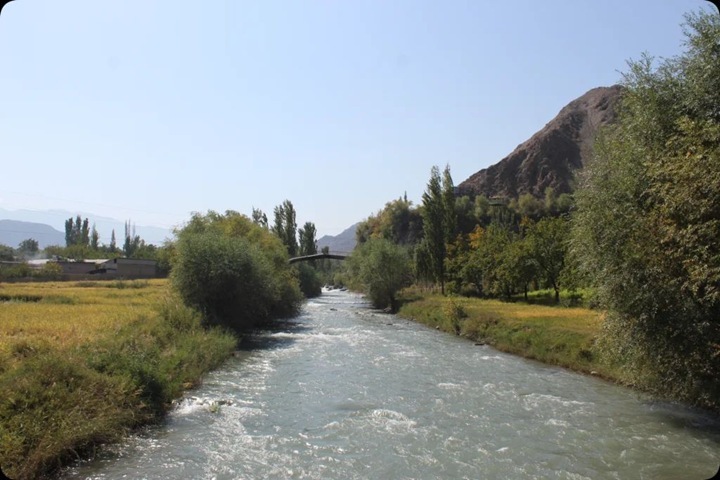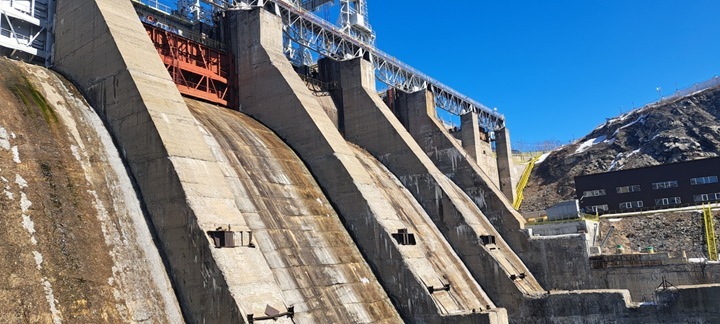“Green” energy at the cost of destroying rivers: the hidden threat of hydropower
The recent report of the International Renewable Energy Agency (IRENA) “Renewable Capacity Statistics 2025” paints a rather optimistic picture of the development of renewable energy sources, which, however, on closer inspection causes serious concern among environmentalists. The proof of this is the analysis of the report published by the international environmental coalition “Rivers without Boundaries”.

In its report, the IRENA agency notes an unprecedented increase in the installed capacity of renewable energy sources (RES) in 2024, reaching 585 GW. This increase represents 92.5% of the total global expansion of electric power capacity and demonstrates a record annual growth rate of 15.1%. It seems that the world is confidently moving towards a “green” future.
The lion’s share of this growth is accounted for by solar energy, which added 452 GW last year. China is the absolute leader, having commissioned 278 GW of new renewable energy capacity, followed by India with an indicator of 24.5 GW. Wind power also contributed, adding 113 GW, which corresponds to an increase of 11.1%. However, these impressive figures hide less noticeable, but extremely destructive trends, environmentalists point out.
IRENA particularly notes the “recovery” of the pace of commissioning of traditional hydropower plants: from 11 GW in 2023 to 15 GW in 2024, which corresponds to an increase of only 1.2%. Against the background of the general RES boom, these 15 GW seem insignificant – only 2.5% of the total increase in renewable capacities per year, a drop in the bucket. Interestingly, the report also records a reduction in Dam capacity by 6 GW in the EU, Argentina, Russia and Ukraine. If the reason is obvious for Ukraine – the vulnerability of energy infrastructure to Russian strikes, then the reasons for the decline in other countries remain unclear, possibly reflecting the gradual abandonment of old, inefficient or environmentally hazardous dams.
About 7 GW of new traditional Dams were built by China. The rest fell mainly on Pakistan, Ethiopia, Vietnam, Tanzania, Indonesia and Nepal. And here lies the most serious environmental problem. Despite its meager contribution to the overall picture of the energy transition, the construction of these new Dams involves disproportionately huge, often irreversible damage to natural ecosystems and the destruction of the last remaining free-flowing rivers on the planet. The created reservoirs lead to the flooding of valuable lands, forced relocation and impoverishment of local communities, destroying their traditional way of life.
In China, dam construction projects are mainly implemented in the high-altitude river gorges of the Tibetan plateau. This leads to the destruction of the unique biodiversity of these fragile ecosystems and the displacement of indigenous peoples and minorities from their ancestral lands. This is a real tragedy unfolding far from the eyes of the world community.
In Pakistan, the launch of the Suki-Kinari Dam built by China was accompanied by mass protests by people who never received fair compensation for flooded lands and desecrated ancestral cemeteries. Their voices are drowned in the noise of water turning turbines and geopolitical interests.
In Tanzania, new hydropower capacity is associated with the Julius Nyerere dam. Its construction, carried out by the Chinese corporation Power China under the guise of Egyptian intermediary contractors, dealt a devastating blow to the key ecosystems of the Selu Reserve, one of the greatest UNESCO World Heritage Sites in East Africa. For the sake of dubious energy benefits, a unique natural heritage of humanity is sacrificed.
In Indonesia, the largest Dam under construction, Batang Toru, also being built by Power China, is actually becoming a tombstone for a newly discovered species of great apes – the Tapanul orangutan. The dam cuts through the only known habitat of this species, condemning it to extinction. This is a vivid example of how “green” energy can become a tool for the destruction of biodiversity.
Even in Uzbekistan, where, according to IRENA, only 9 MW of hydroelectric power was installed in 2024, the main “achievement” was a tiny cascade of Dams on the Ugam River with a capacity of 4.5 MW. This project destroyed the habitat of at least four species of rare endemic fish and blocked the watercourse flowing from the territory of the UNESCO World Heritage Site “Western Tien Shan”, and without any assessment of the impact on its unique ecosystems.
Every new traditional hydroelectric power station is a potential killing of a living river. In a situation where hydropower of this type no longer has significant economic advantages over other renewable energy sources and its contribution to the global energy transition is negligible, every decision to build a new dam looks like a potential environmental crime against nature and humanity. We continue to destroy the last wild rivers for the sake of a slight increase in energy, ignoring the long-term catastrophic consequences.
China also commissioned 7.5 GW of pumped-storage power plants (HPPs) in 2024. Another 0.5 GW of hydropower plants were installed in France and Morocco. The PSPP technology, especially in the closed-loop version, when natural riverbeds are not used, is considered to be more efficient for energy storage and potentially less harmful to aquatic ecosystems. However, even such projects can lead to unacceptable environmental consequences. An example is the huge damage caused by the Snowy-2 project in Australia, which is being implemented in a national park. The ill-considered placement of renewable energy facilities, including Dams and PSPPs, is a serious problem for nature conservation worldwide. Unfortunately, as noted in the ecological coalition “Rivers without Boundaries”, governments and investors often demonstrate a lack of political will to prevent the recurrence of these mistakes, putting short-term economic or political goals above the long-term well-being of the planet.
Alexander Eskendirov (Rivers.Help!)


